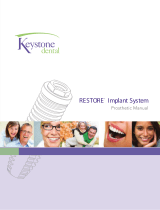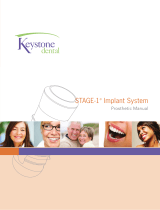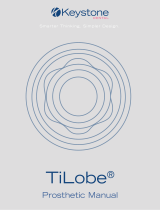Page is loading ...

R3-221229
FA03450
User's Manual
Company names and product names are trademarks or registered trademarks of their respective holders.
Copyright © 2021 - 2022 DGSHAPE Corporation
Thank you very much for purchasing this product.
• To ensure safe use with a full understanding of this machine's performance, please be sure to read through this manual com-
pletely.
• Reproduction, citation, or translation, in whole or in part, of this manual is prohibited without the express written consent of
DGSHAPE Corporation.
• The contents of this operation manual and the specications of this product are subject to change without notice.
• DGSHAPE Corporation assumes no responsibility for any damage that may occur through use of this product, regardless of any
failure to perform on the part of this product or of any errors in this document. Damage includes but is not limited to damage
caused by the specications or performance of the product, damage caused by non-use of the product, and damage caused by
deliverables obtained through use of this product. Such damage can be either direct or indirect.
Supported models: DWX-52D / DWX-52DC / DWX-52DCi
http://www.dgshape.com/

Contents
Contents ...............................................................................................................................................................1
Before Use ............................................................................................................................................................2
Checking the Included Items ...........................................................................................................................2
Items to Prepare Yourself ..................................................................................................................................2
Advance Preparation ..........................................................................................................................................3
Usage Method.....................................................................................................................................................4
Cold-cured resin ....................................................................................................................................................5
Denture Base Workow ..............................................................................................................................5
Removable Denture Workow .................................................................................................................8
Heat-cured resin.................................................................................................................................................12
Denture Base Workow ...........................................................................................................................12
Removable Denture Workow ..............................................................................................................17
1

Checking the Included Items
The following items are included with the kit. Make sure they are all present and accounted for.
CA-DK2-FX (15) CA-DK2-TR (15) Dedicated milling burs*1 Silicone stands (2)
*1: ZRB-150D, ZPB-100D, ZPB-50D, ZPB-30D
MEMO
The CA-DK2-FX, CA-DK2-TR, and dedicated milling burs can be purchased separately.
Items to Prepare Yourself
• Items included with the machine
Adapter (1) Torque screwdriver (0.6 N·m) (1)
• Materials, equipment, etc.
¾Cold-cured resin or Heat-cured resin
¾Pressure pot
¾Stand for adjusting the position of the polymerizing resin (This is used when adjusting the resin height during polym-
erization.)
¾Spatula (This is used when mixing together the powder and the liquid.)
¾Container (This is used when mixing together the powder and the liquid.)
¾Lidded container (This is used when mixing together the heat-cured resin powder and the liquid.)
¾Tissue paper (This is used to absorb the heat-cured resin's excess liquid layers.)
¾Polyethylene sheet (This is used to keep ngers from coming into contact with the heat-cured resin's excess liquid
layers.)
¾Vibrator (This is used to extract air bubbles from the container after the powder and the liquid have been mixed to-
gether.)
¾Heat-resistant acrylic resin adhesive (This is used to ax the CA-DK2-FX, the CA-DK2-TR, and articial teeth.)
¾Brush/eye dropper (This is used to apply adhesive.)
¾Articial teeth
Before Use
2

Advance Preparation
Add water to the pressure pot and prepare a stand that will position the CA-DK2-FX (cold-cured) or the silicone stand (heat-
cured) within the range indicated by the water level gradations.
(Silicone stand)
Cold-cured Heat-cured
Before Use
3

This section explains how to create dentures with this kit. Cold-cured resin or heat-cured resin may be used.
There are two workows: the Denture Base workow in which the resin is polymerized before the denture base is milled and
the articial teeth are axed and the Removable Denture workow in which the mold for the articial teeth is milled and ar-
ranged and the resin is polymerized before the complete denture (full denture) is milled. The work procedure varies depending
on the resin and method used.
Cold-cured resin
• Denture Base Workow (P. 5)
1. Create the denture
resin. (P. 5)
2. Mill the denture
resin. (P. 6)
3. Ax the articial
teeth. (P. 7)
• Removable Denture Workow (P. 8)
1. Ax the CA-DK2-
FX and the CA-DK2-TR.
(P. 8)
2. Mill the tooth mold
(the female mold for
the articial teeth) into
the TR. (P. 8)
3. Arrange the arti-
cial teeth on the TR.
(P. 10)
4. Create the denture
resin. (P. 10)
5. Mill the denture
resin. (P. 11)
Heat-cured resin
• Denture Base Workow (P. 12)
1. Drill a hole in the CA-
DK2-FX. (P. 12)
2. Create the denture
resin. (P. 13)
3. Mill the denture
resin. (P. 15)
4. Ax the articial
teeth. (P. 16)
• Removable Denture Workow (P. 17)
1. Ax the CA-DK2-
FX and the CA-DK2-TR.
(P. 17)
2. Drill holes in the
FX and mill the tooth
molds into the TR.
(P. 17)
3. Arrange the arti-
cial teeth on the TR.
(P. 19)
4. Create the denture
resin. (P. 19)
5. Mill the denture
resin. (P. 21)
Usage Method
4

Cold-cured resin
Denture Base Workow
In this method, polymerize the resin, and then mill the denture base and ax the articial teeth.
1. Create the denture resin.
A Mix the cold-cured resin powder and the liquid together well.
After mixing, use a vibrator to extract the air bubbles.
B Pour the mixture into the CA-DK2-FX (hereinafter referred to as the FX).
C Wait for the surface of the mixture to dry.
D Place the FX in the pressure pot.
E Check the pressure pot's water level.
Adjust the amount of water if it is not at the level indicated on the pressure pot.
F Set the pressure, temperature, and time on the pressure pot to polymerize the resin.
Set the values that are required in order for the cold-cured resin being used to polymerize.
G After polymerization, cool the resin at room temperature.
Usage Method
5

2. Mill the denture resin.
A Remove the adapter cap.
Use a torque screwdriver to loosen the adapter's cap screws by turning them approximately four times each, and then re-
move the adapter cap.
B Attach the adapter base to the FX.
Align the edge of the adapter (A) with the edge of the FX (B).
C Attach the adapter cap.
D Tighten the cap screws (in four locations).
Tighten the screws until this state is reached.
Important
To x the part in place evenly, tighten the cap screws in order across the diagonals.
Usage Method
6

E Mill the denture.
Attach the FX to the machine, and then use the CAM data to mill the denture resin together with the FX.
3. Ax the articial teeth.
A Remove the adapter.
B Use heat-resistant acrylic resin adhesive to ax the articial teeth.
Usage Method
7

Removable Denture Workow
Mill the tooth mold (the female mold for the articial teeth), arrange the articial teeth, polymerize the resin, and then mill the
complete denture (full denture).
1. Ax the CA-DK2-FX and the CA-DK2-TR.
A Apply heat-resistant acrylic resin adhesive to the CA-DK2-FX (hereinafter referred to as the FX).
Measure approximately 0.5 ml of heat-resistant acrylic resin adhesive with an eye dropper, and then drip this adhesive
onto one of the three locations indicated in the gure so this location has adhesive with a diameter of approximately 5 mm
(0.20 in.). Repeat for the other two locations.
Important
• To prevent tray deformation, do not apply too much adhesive.
• The surface on which adhesive is applied will have small air bubbles, but this is not a problem during milling.
B Attach the CA-DK2-TR (hereinafter referred to as the TR) by aligning its recessed parts with the protrusions on the
FX.
2. Mill the tooth mold (the female mold for the articial teeth) into the TR.
A Remove the adapter cap from the adapter.
Use a torque screwdriver to loosen the adapter's cap screws by turning them approximately four times each, and then re-
move the adapter cap.
Usage Method
8

B Attach the adapter base to the FX.
Align the edge of the adapter (A) with the edge of the FX (B).
C Attach the adapter cap.
D Tighten the cap screws (in four locations).
Tighten the screws until this state is reached.
Important
To x the part in place evenly, tighten the cap screws in order across the diagonals.
E Mill the tooth mold (the female mold for the articial teeth) into the TR.
Attach the TR to the machine, and then use the CAM data to mill the tooth mold to use in tting the TR with articial teeth.
F Loosen the cap screws, and then remove the adapter cap and the adapter from the FX.
Usage Method
9

3. Arrange the articial teeth on the TR.
A Apply one to two drops of heat-resistant acrylic resin adhesive to the TR's tooth mold.
B Check the shape of the tooth mold and the orientation of the articial teeth.
C Push the articial teeth onto the TR's tooth mold.
D Check that the articial teeth have been attached to the tooth mold without any gaps.
Important
The articial teeth have an orientation that matches the tooth mold. Attach teeth with the proper orientation.
4. Create the denture resin.
A Mix the cold-cured resin powder and the liquid together well.
After mixing, use a vibrator to extract the air bubbles.
B Pour the mixture into the FX where the articial teeth have been set.
C Wait for the surface of the mixture to dry.
D Place the FX in the pressure pot.
E Check the pressure pot's water level.
Adjust the amount of water if it is not at the level indicated on the pressure pot.
Usage Method
10

F Set the pressure, temperature, and time on the pressure pot to polymerize the resin.
Set the values that are required in order for the cold-cured resin being used to polymerize.
G After polymerization, cool the resin at room temperature.
5. Mill the denture resin.
A Attach the adapter base to the FX that has undergone polymerization.
Align the edge of the adapter (A) with the edge of the FX (B) before attaching the base.
B Attach the adapter cap.
C Tighten the cap screws (in four locations).
Tighten the screws until this state is reached.
Important
To x the part in place evenly, tighten the cap screws in order across the diagonals.
D Mill the complete denture (full denture).
Attach the FX to the machine, and then use the CAM data to mill the denture resin together with the FX.
E Loosen the cap screws, and then remove the adapter cap and the adapter from the FX.
Usage Method
11

Heat-cured resin
Denture Base Workow
In this method, polymerize the resin, and then mill the denture base and ax the articial teeth.
1. Drill a hole in the CA-DK2-FX.
A Remove the adapter cap.
Use a torque screwdriver to loosen the adapter's cap screws by turning them approximately four times each, and then re-
move the adapter cap.
B Attach the adapter base to the CA-DK2-FX (hereinafter referred to as the FX).
Align the edge of the adapter (A) with the edge of the FX (B).
B
A
C Attach the adapter cap.
D Tighten the cap screws (in four locations).
Tighten the screws until this state is reached.
Important
To x the part in place evenly, tighten the cap screws in order across the diagonals.
Usage Method
12

E Drill a hole in the FX.
Attach the FX to the machine and cut o the part indicated in the gure.
F Loosen the cap screws, and then remove the adapter cap and the adapter from the FX.
2. Create the denture resin.
A Insert into the lidded container all the measured heat-cured resin liquid.
B Insert 80% of the measured heat-cured resin powder so it ts below the liquid surface.
C Insert the remaining 20% of the powder to cover the liquid surface.
D Close the lid and mix the components together.
E Wait 2 to 3 minutes until the mixture becomes porridge-like. If the room temperature is low, you may have to wait
a little longer.
Usage Method
13

F Fix the FX onto the protrusion in the silicone stand.
Align the hole drilled in step 1. with the protrusion on the silicone stand.
Supplemental
Applying vegetable oil to the protrusion on the silicone stand makes it easier to remove the resin after polymerization.
G Pour the mixture into the FX.
Flatten the surface of the mixture with a spatula.
H Cover the mixture with a piece of tissue paper.
I Place a polyethylene sheet on the tissue paper.
J Lightly press down on the polyethylene sheet and the tissue paper to absorb the liquid layer from the surface of
the mixture.
Important
A liquid layer remaining on the surface may cause air bubbles to form there after polymerization.
K Remove the polyethylene sheet and the tissue paper.
L Place the silicone stand and the FX in the pressure pot.
Usage Method
14

M Check the pressure pot's water level and temperature.
• Add water until approximately half the silicone stand is submerged.
• Heat the water until its temperature is between 20°C and 30°C (68°F and 86°F).
N Apply pressure for approximately 60 minutes.
• After applying pressure, open the lid and check that there is no liquid on the resin surface.
• This time is merely a guideline. Set the time required for the heat-cured resin being used to turn rubbery.
O Perform the pre-polymerization.
Gradually increase the water temperature to 65°C (149°F), and then perform pressurized and heated polymerization at 65
°C (149°F) for 90 to 120 minutes.
Important
The pre-polymerization time is merely a guideline. If cracks or air bubbles remain in the heat-cured resin being used, in-
crease this time until there are no cracks or air bubbles.
P Perform the polymerization.
Perform pressurized and heated polymerization at 80°C (176°F) for 40 minutes.
Important
Heat-cured resin polymerizes at high temperatures. Handle it carefully after polymerization to avoid burns.
Q Remove the FX from the silicone stand, and then leave the FX at room temperature for approximately 30 minutes.
R Cool the FX for approximately 15 minutes with cold water.
3. Mill the denture resin.
A Remove the adapter cap.
Use a torque screwdriver to loosen the adapter's cap screws by turning them approximately four times each, and then re-
move the adapter cap.
B Attach the adapter base to the FX that has undergone heated polymerization.
Align the edge of the adapter (A) with the edge of the FX (B).
Usage Method
15

C Attach the adapter cap.
D Tighten the cap screws (in four locations).
Tighten the screws until this state is reached.
Important
To x the part in place evenly, tighten the cap screws in order across the diagonals.
E Mill the denture base.
Attach the FX to the machine, and then use the CAM data to mill the denture resin together with the FX.
4. Ax the articial teeth.
A Remove the adapter.
B Use heat-resistant acrylic resin adhesive to ax the articial teeth.
Usage Method
16

Removable Denture Workow
Mill the tooth mold (the female mold for the articial teeth), arrange the articial teeth, polymerize the resin, and then mill the
complete denture (full denture).
1. Ax the CA-DK2-FX and the CA-DK2-TR.
A Apply heat-resistant acrylic resin adhesive to the CA-DK2-FX (hereinafter referred to as the FX).
Measure approximately 0.5 ml of heat-resistant acrylic resin adhesive with an eye dropper, and then drip this adhesive
onto one of the three locations indicated in the gure so this location has adhesive with a diameter of approximately 5 mm
(0.20 in.). Repeat for the other two locations.
Important
• To prevent tray deformation, do not apply too much adhesive.
• The surface on which adhesive is applied will have small air bubbles, but this is not a problem during milling.
B Attach the CA-DK2-TR (hereinafter referred to as the TR) by aligning its recessed parts with the protrusions on the
FX.
2. Drill holes in the FX and mill the tooth molds into the TR.
A Remove the adapter cap.
Use a torque screwdriver to loosen the adapter's cap screws by turning them approximately four times each, and then re-
move the adapter cap.
Usage Method
17

B Attach the adapter base to the FX.
Align the edge of the adapter (A) with the edge of the FX (B).
C Attach the adapter cap.
D Tighten the cap screws (in four locations).
Tighten the screws until this state is reached.
Important
To x the part in place evenly, tighten the cap screws in order across the diagonals.
E Drill holes in the FX and mill the tooth molds into the TR.
Attach the FX and TR to the machine, and then use the CAM data to mill the tooth mold to use in tting the TR with arti-
cial teeth. Also drill holes in the FX.
F Remove the FX and TR from the machine, loosen the cap screws, and then remove the adapter cap and the adapter
from the FX.
Usage Method
18

3. Arrange the articial teeth on the TR.
A Apply one to two drops of acrylic resin adhesive to the TR's tooth mold.
B Check the shape of the tooth mold and the orientation of the articial teeth.
C Push the articial teeth onto the TR's tooth mold.
D Check that the articial teeth have been attached to the tooth mold without any gaps.
Important
The articial teeth have an orientation that matches the tooth mold. Attach teeth with the proper orientation.
4. Create the denture resin.
A Insert into the lidded container all the measured heat-cured resin liquid.
B Insert 80% of the measured heat-cured resin powder so it ts below the liquid surface.
C Insert the remaining 20% of the powder to cover the liquid surface.
D Close the lid and mix the components together.
Usage Method
19
/



